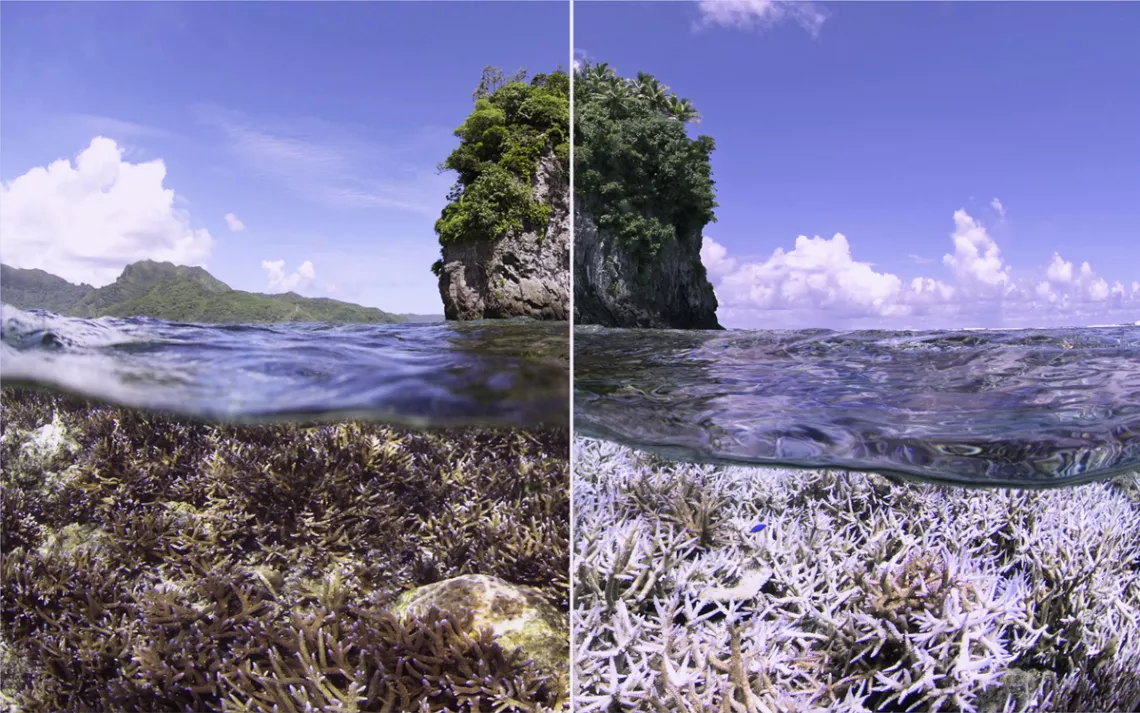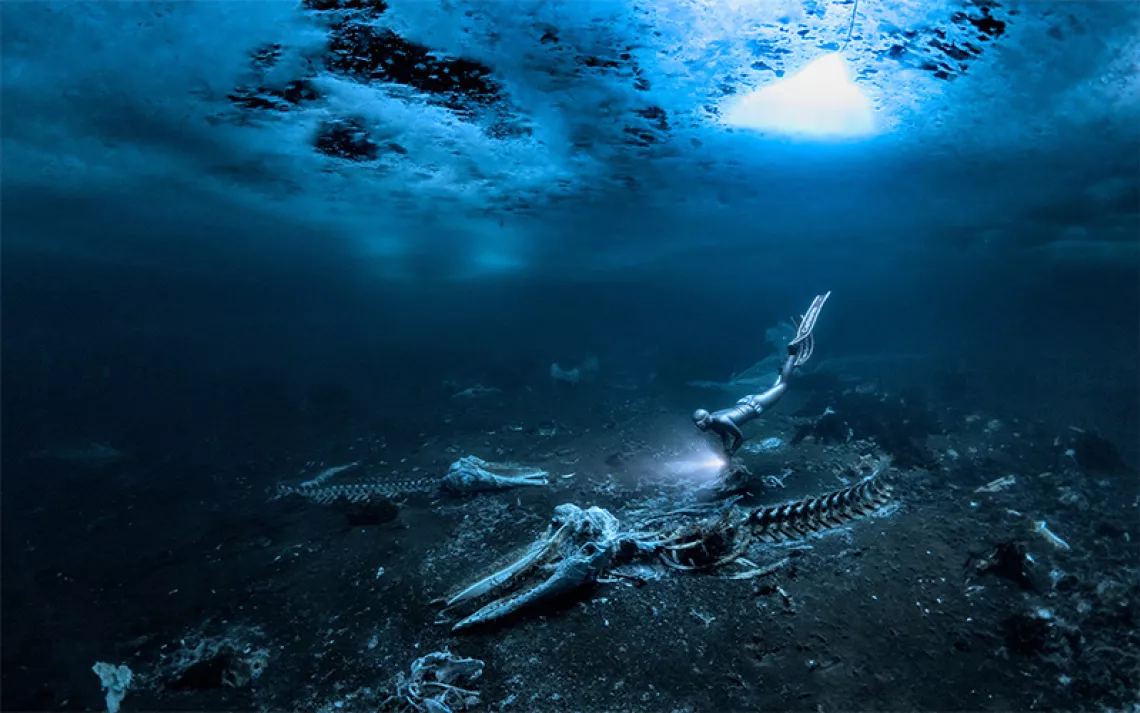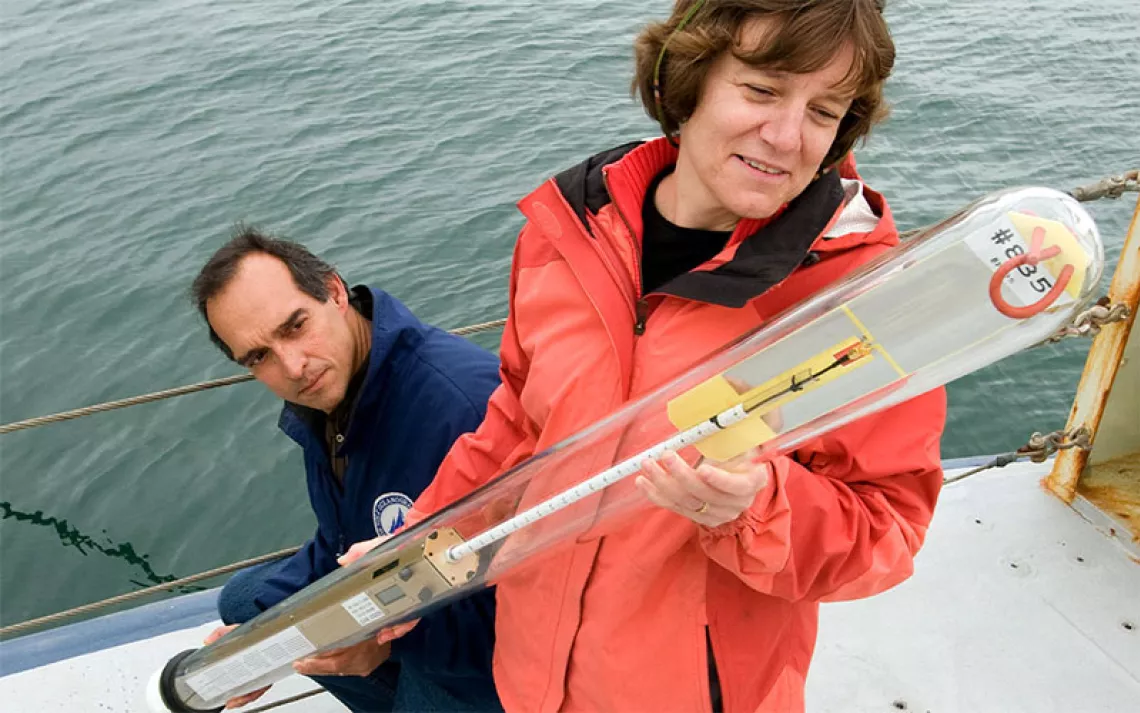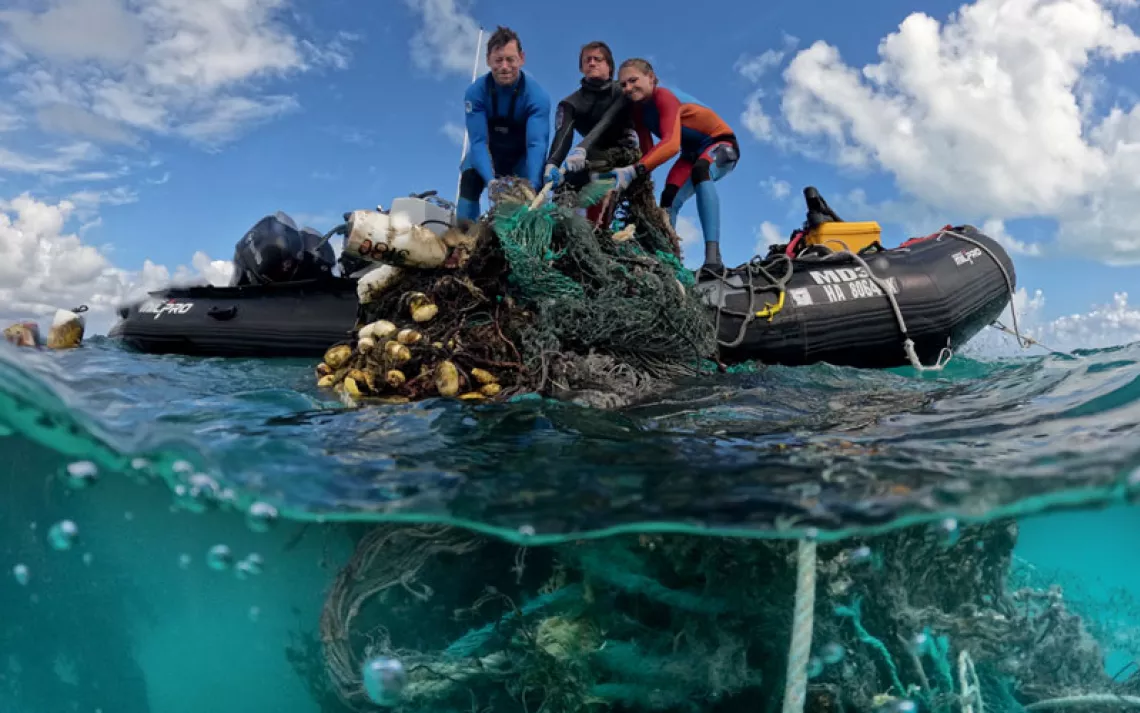Watching Reefs Bleach in Real Time
A review of "Chasing Coral," premiering today on Netflix

Photo courtesy of Netflix
There may be no one who knows more about coral reefs than the godfather of the field, Dr. John “Charlie” Veron, an Australian scientist and author who has discovered and described more than 20 percent of the world’s known coral species. In one of the most touching moments of Chasing Coral, an Exposure Labs documentary coming out July 14 on Netflix, Veron comforts recent college grad Zackery Rago, one of the film’s starring underwater camera technicians. Rago has just spent months diving off the northeastern coast of Queensland to document the devastating effects of climate change on coral reefs and admits his emotional exhaustion to his mentor. Veron replies, “You’ve got no choice, I’m afraid. You’ve got to keep at it. Because otherwise you’re not going to like yourself when you’re an old man. You’re going to like yourself much more if you can say, well, I sure tried to turn that around.”
How does someone turn around the scope and speed of coral-reef deaths across the world due to rising ocean temperatures? In Chasing Coral, Jeff Orlowski, the film’s director (Chasing Ice, 2012), and Richard Vevers, an advertising executive turned underwater photographer, propose that coral reefs have a fundamental branding issue: Since fewer than 1 percent of people scuba dive, most people simply don’t see that coral reefs are undergoing mass bleaching at unprecedented rates, becoming white skeletons of their former selves. If temperatures return to normal, some corals can recover from this process; however, the bulk remain lifeless. Chasing Coral was hatched when Vevers called up Orlowski, hoping the director could do for coral reefs what he had done so successfully for the melting ice shelves and glaciers of the Arctic in Chasing Ice: document climate change in real time.
Most of us think of coral reefs as plants, but they are actually animals with indefinite life spans. Corals are tiny polyps that feed on algae and form a limestone home—a reef—so as to live in colonies. However, when water temperatures rise, the algae produce toxins, which cause corals to expel that algae in self-defense. This process turns reefs’ trademark kaleidoscope of color deathly white. In Chasing Coral, Orlowski drives home the point that “climate change is really an ocean change story,” emphasizing that the ocean absorbs 93 percent of the heat caused by climate change. This has raised ocean temperatures by 2 degrees Fahrenheit—which may not sound like a lot, until you realize that the ocean is as sensitive as the human body and that 100.6 is already a fever.
Chasing Coral’s raison d’etre is to document in time-lapse video format this bleaching process. Therefore, the film is just as concerned with the technical aspects of filming coral underwater for months at a time as it is with the dangers that coral reefs face. An underwater web cam company invented new technologies to create this movie. But when put to the test, the cameras didn’t always cooperate, so Zack and his diving colleagues had to document the bleaching process manually, by diving to the same spot multiple times a day—a grueling feat.
The film assumes that visual documentation of this process is education enough. “It’s been the hope that if we can show people what’s happening, we don’t have to study a chart or a graph to wrap your head around what the science is saying,” Orlowski told Sierra. “It’s just to see something to understand what is going on. . . . It ties into that notion that seeing is believing.” There’s no doubt that seeing the effects climate change wreaks on coral, in real time, is indeed powerful. It is also tremendously important for scientific and historical record.
However, characterizing the problem of coral reef destruction as a communications issue rather than as a political one may also overstate the power of the visual. Forty years ago, long before the promulgation of social and digital media, Susan Sontag noted that photographic images are not self-explanatory, but are susceptible both to manipulation and mixed interpretations. Especially in the age of alternative facts, does seeing the degradation alone convince nonbelievers that, as Orlowski states, “The fate of coral reefs is dependent on human action”?
Even the country with arguably the most to lose has sometimes failed to see what is in front of it. The economic value of Australia's Great Barrier Reef is numbered at $42 billion (USD), meaning it’s essentially priceless. It accounts for 64,000 jobs, in fields including tourism, commercial fishing, and scientific research, and contributes immense socio-cultural value to Australia’s brand, and to our world heritage. However, Australia’s Turnbull administration recently declared it a “big win” that the reef was left out of UNESCO’s List of World Heritage in Danger. Why? Because it would embarrass current government efforts, particularly the Reef 2050 plan, which critics claim does not do enough to stop climate change. The optics of politics—not just the coral itself—must also be seen in a certain light.
That said, Orlowski and his team succeed in driving home the point that coral reefs are not just one species but constitute an entire ecosystem. More than 25 percent of oceanic wildlife is dependent on coral reefs. They are as essential as trees. Indeed, Orlowski believes the film “really, deep down, is about the fundamental changes that are happening on this planet far beyond coral reefs.” He could have made that point more apparent by featuring the ways in which local people, economies, and cultures are inextricably tied to the survival of coral reefs’ ecosystems; instead, the stars are cameramen and scientists, who are mainly men and mainly white. Still, seeing the damage will hopefully lead viewers to pressure local and global governing bodies to keep believing in the threat of climate change—and to progress toward their Paris Agreement pledges.
 The Magazine of The Sierra Club
The Magazine of The Sierra Club







